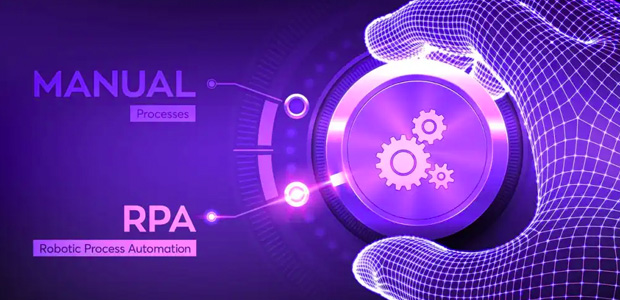
Below, we examine seven key reasons why embracing robotic process automation should be a top priority for healthcare providers seeking to reduce costs, gain efficiency, improve quality of care and patient experiences, increase staff productivity, scalability, compliance with regulations, and prepare for the digital health ecosystem of the future. Real-world examples and statistics will showcase just how impactful automated systems can be in tackling critical organizational goals.
Reduced Costs
In an era of rising healthcare costs and declining reimbursements, providers need solutions to maximize limited financial resources while maintaining quality of care. Robotic Process Automation offers a cost-effective digital workforce that can significantly cut expenses across clinical and administrative functions. According to Healthcare IT News, “One RPA installation at an oncology practice for prior authorizations realized a cost savings of nearly $3 million in its first year.”
By automating high-volume manual tasks, the need for additional full-time employees (FTEs) is also reduced. Hiring new staff at competitive wages, recruiting costs, training, benefits, facilities, supplies and other employee expenses add up. A Deloitte study on robotic process automation in healthcare estimated that “RPA could potentially result in 25 to 50 percent cost reduction for specific use cases through improved productivity and process effectiveness.”
This could equate to thousands or even millions in savings each year for larger health systems. The Lewin Group conducted a Total Cost of Ownership (TCO) analysis comparing manual FTE labor to integrated RPA over a 5-year period. For 2,500 bots, the net savings amounted to nearly $40 million. Bots can work around the clock without breaks, sick days, or human error too. By scaling up automated processes to handle growing workloads more cost-effectively, providers extend limited budgets.
Increased Efficiency and Productivity
Healthcare administrative teams struggle under heavy workloads riddled with monotonous data entry, claims processing, appointment scheduling, and other repetitive tasks. This forces them to spend less time on higher-value responsibilities that have a tangible impact on patients and the organization. It also frequently results in productivity loss, bottlenecks, and employee burnout.
An Accenture study found that “30% of healthcare administration tasks involve data processing that could be automated by RPA.” Handing high-volume, mundane responsibilities over to digital workers optimizes human talent. Staff is then freed up to focus on complex decision making, critical thinking, strategy, patient interactions and delivering compassionate care.
For instance, automated prior authorization handling alleviates constant phone calls and faxing of forms back and forth with insurance providers. Staff intervenes only if an exception arises outside preset parameters. Approval rates also typically rise with RPA through error-proof data capture and faster turnarounds. This prevents delays in necessary treatment.
Automation enables staff to get more done in less time. Efficiency is also gained by preventing rework caused by human error through standardized task execution. Consider prescription refill processing.
Improved Quality of Care and Patient Experience
The entire purpose of healthcare is caring for patients to positively impact their wellbeing. Yet providers often get so caught up treating illnesses that the overall experience and satisfaction of those they serve gets overlooked. This has resulted in declines in healthcare consumer loyalty over recent years. In one survey, 46% of patients reported being unlikely to recommend a provider or return for future care after just one negative encounter.
Robotic Process Automation offers ways to improve both quality of clinical care and the patient journey through enhancements like:
- Optimized appointment scheduling with automated reminders and notifications to limit no-shows. This ensures patients get needed exams and consults as scheduled.
- Decreased wait times for authorizations and pharmacy refills so treatment plans remain on track without disruption.
- Faster billing processes to minimize patient payment hassles after receiving care.
- More accurate medical records through reduced human data entry errors. This assists clinicians in diagnosis and preventive screening.
- Personalized wellness plan development and monitoring between visits.
- 24/7 self-service options like virtual assistants to reschedule appointments or answer common questions after-hours when staff is not available.
Releasing staff resources through increased efficiency also leads to improved patient interactions when human judgment is required. For example, automated collection of patient health history details upon check-in allows nurses and doctors to spend more one-on-one time building rapport.
Studies show higher patient satisfaction directly correlates with better outcomes in chronic disease management, preventable hospital readmissions, and even mortality rates. So improving both quality of care and the patient experience through RPA ultimately leads to healthier communities.
Increased Scalability and Growth
Rapid consolidations have resulted in larger health systems and patient volumes to manage. Bots easily scale, allowing provider organizations the agility to take on new partnerships, physicians, patients and facilities without proportional hikes in administrative expenses.
For example, one bot doing pre-appointment insurance eligibility checks for a small practice may take two minutes per patient. But a ten-fold volume increase at a large health system can be managed simply by adding more bot capacity at minimal added cost. Whereas additional human staff, facilities and infrastructure would be necessitated otherwise to absorb such growth. This enables strategic growth initiatives to progress at an accelerated rate thanks to easily expanded RPA capacity.
Increased Compliance
The healthcare industry operates under strict regulatory compliance rules around patient privacy, data security, fraud prevention, and financial practices.
Manual processes intrinsically carry risks of human oversight or shortcuts leading to issues like:
- Missed redaction of sensitive information before record releases
- Transcription errors altering health data
- Misdirected faxes violating HIPAA regulations
- Coding mistakes resulting in inaccurate claims and risk of audit
Robotic Process Automation minimizes such issues through built-in validations, automatic triggering of mandatory workflows, and digital recordkeeping. For example, bots can redact every operative report before release regardless of patient type to prevent accidental disclosure. They will also consistently follow complex clinical and administrative rules without wavering due to fatigue or lack of proficiency like people.
This ensures consistency and conformity crucial for passing regular compliance audits. And optimization of processes through RPA simultaneously prepares organizations for new and emerging regulations so teams can proactively adapt rather than reacting under tight deadlines.
Transitioning to the Future Digital Healthcare Ecosystem
Healthcare is embarking on a revolutionary digital transformation. Forward-looking systems recognize RPA as an essential first step toward full AI adoption down the road. Virtual assistant chatbots and predictive data analytics relying on automated data processing will soon emerge at the frontlines of healthcare innovation.
Bots act as a transitional digital workforce ready to take on rules-based tasks until artificial intelligence matures adequately to handle complex medical responsibilities. This prevents complete business process reengineering down the road. RPA also helps aggregate clean, consistent data required to train advanced AI algorithms over time.
Summary
RPA alleviates administrative burdens stopping healthcare providers from realizing their full potential in delivering positive patient outcomes and responsible cost management.
This primer outlines seven compelling benefits driving increasing RPA adoption across global health systems:
- Reduced Costs
- Increased Efficiency and Productivity
- Improved Quality of Care and Patient Experience
- Increased Scalability and Growth
- Increased Compliance
- Transitioning to the Future Digital Healthcare Ecosystem
While no technology investment is without challenges, the simplicity of RPA compared to other emerging innovations makes it an easy win for stretched healthcare provider operations. And seamless integration within existing IT environments ensures minimal disruption during implementation. The result is a flexible digital workforce capable of transforming care delivery through increased human capacity.
